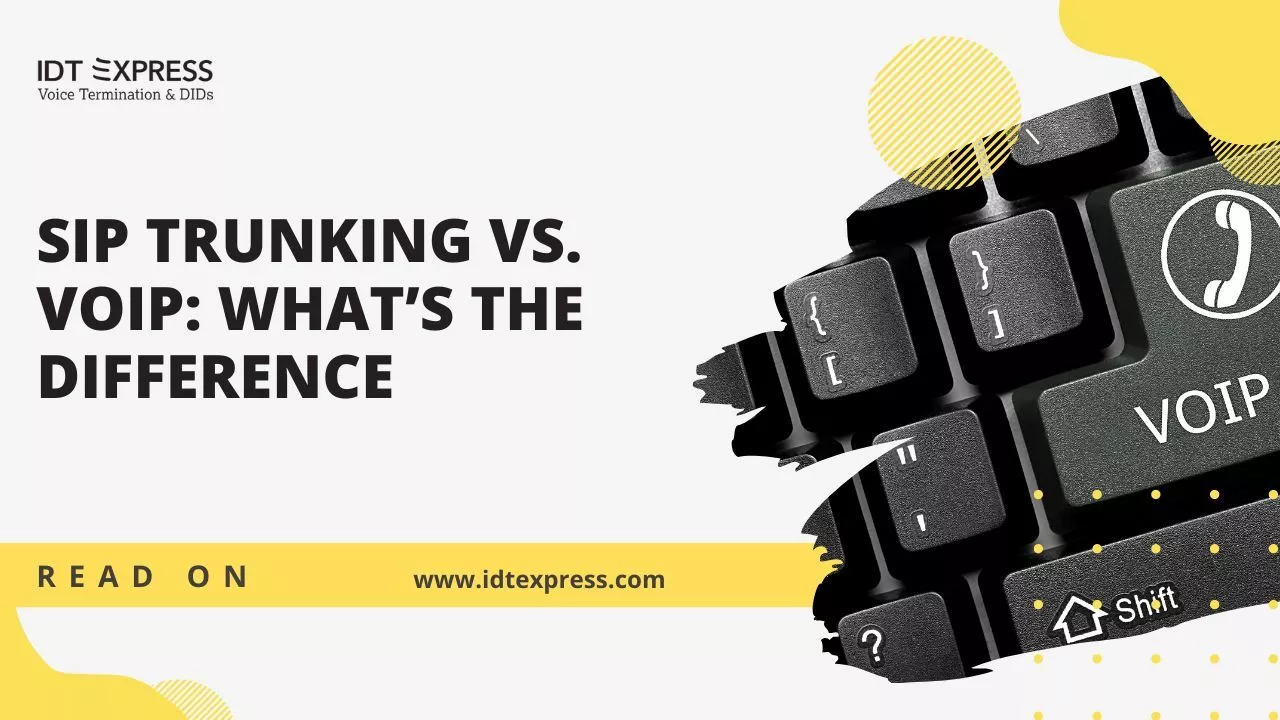VoIP

Voice over Internet protocol (VoIP) transmits and manages voice calls over the Internet instead of via traditional PBX phone lines. Users can make VoIP calls from a computer, smartphone, or other mobile device, as well as special VoIP-enabled phone handsets.
Benefits of VoIP include:
- number portability – change carriers without having to change phone numbers
- scalability – add unlimited new VoIP ‘lines’ without visits from phone company technicians or electricians
- consolidation – operate voice and data over a single network (also cuts costs)
- ability to keep digital recordings of all incoming call
VoIP can reduce communication costs substantially. For instance, it doesn’t incur long-distance charges because VoIP calls are just normal Internet traffic. According to an academic case study, annual VoIP costs for a business with 400 employees were about $4,000 compared to a whopping $86,000 per year for a PBX system.
How can VoIP enable a hybrid workplace? By allowing employees to make VoIP calls via the company’s network while working remotely outside the office.
The steps to transfer from traditional phone system to BYOC virtual system include:
- Adopting UCaaS that possesses a lot of features, or
- Providing SIP trunks, without having the customer migrate to a UCaaS solution.
- Transfer to a cloud platform, and then to BYOC
SIP Trunking

SIP (session initiation protocol) is used during a VoIP call to initiate the session, connect the participants, manage the session and terminate it – all via the Internet.
SIP trunks connect a company’s PBX phone system to a public switched telephone network (PSTN). Unlike legacy phone system trunks called TDMs, SIP trunks allow businesses to support an unlimited number of VoIP voice channels. Just one SIP trunk can replace several TDM trunks, reducing the complexity and cost of communication infrastructure and operations. Businesses can save an estimated 20 to 60 percent of their TDM costs by switching to SIP trunking.
Aside from VoIP voice calls, SIP trunking supports video conferencing, messaging, and multimedia file exchanges. It can also be used for asynchronous applications like presence and automatic callback.
SIP can automatically reroute office calls to remote devices – a key capability in a hybrid work environment.
SIP Trunking vs. VoIP: Understanding the Difference
What’s the difference between VoIP and SIP trunking? In simple terms:
- VoIP enables voice calls over the Internet
- SIP is a protocol that extends VoIP capabilities
- SIP trunking is hardware that connects SIP-enabled devices to the Internet
VoIP doesn’t require SIP – but SIP is one of the most common protocols used to facilitate and support VoIP. SIP can extend VoIP beyond voice by enabling unified communication (UC), a fully integrated suite of applications such as video conferencing, email, and messaging.
VoIP Only
Again, you don’t need SIP to use VoIP. There are ways to enable VoIP without SIP trunks, including a hosted PBX, or via protocols like H.323 and MGCP (media gateway control protocol. This means it’s possible to adopt VoIP on its own.
Let’s break down some potential pros and cons of a ‘VoIP only’ option.
Pros:
- low-cost yet effective, especially for voice only
- easy to implement and relocate
- can often be deployed with no long-term contract
- no on-site installation required
- predictable flat-rate billing is much cheaper than PBX calling
- some providers include features like call waiting, call forwarding, and caller I
Cons:
- may not fully support multimedia communications beyond voice
- needs sufficient bandwidth to ensure call quality
- may not fully integrate with third-party applications
- some providers don’t offer mobile apps or integratio
VoIP with SIP

SIP isn’t necessary for VoIP – but it can improve VoIP and other communications capabilities significantly. By integrating SIP with your existing PRI (primary rate interface) phone lines, your company can create a hybrid phone system
Here are some possible pros and cons of adopting ‘VoIP with SIP’.
Pros:
- SIP reduces the strain a VoIP system can place on your overall network
- ability to implement UC for integrated and enhanced video, messaging and other communication applications
- consolidating apps through UC cuts IT complexity and costs
- integrations with common productivity apps and software are usually baked in
- flexibility to add more lines or features as your needs evolve
- failover to employee mobile devices if connectivity is disrupted
- features and devices can be provisioned and managed through a single online dashboar
Cons:
- SIP (like VoIP) requires sufficient bandwidth to maintain QoS (quality of service); this could require an Internet service upgrade
- running SIP over public Internet could carry QoS and security risk
‘VoIP only’ or ‘VoIP with SIP’: Which is best for your business?
Choosing between ‘VoIP only’ or ‘VoIP with SIP’ could come down to asking a few key questions about your organization’s needs, goals, and budget.
Will a voice-only VoIP system suffice? Or do you want to move toward a UC model with integrated features? If you’re already using various apps from different vendors for things like video conferencing, messaging and collaboration, would a ‘VoIP with SIP’ deployment consolidate and simplify the management, support, and billing of those separate apps?
The bottom line? VoIP and SIP trunking have a proven track record of increasing reliability, productivity, and scalability. Both can facilitate the shift toward hybrid work while cutting costs to help businesses boost their own bottom line.
To learn more on how superior voice quality can improve both productivity and profitability of your business, set up a free consultation session with our Voice experts.
IDT is one of the world’s largest telecom carriers and is trusted by the likes of Verizon, AT&T, Orange, Vodafone, and a 1000 others. For 3 decades IDT Corporation has pioneered technologies and services that enable people and businesses around the world to communicate and share more easily and affordably. Today we leverage our expertise to provide consumers and businesses with innovative communications and payment services through our flagship brands: IDT, BOSS Revolution, net2phone, National Retail Solutions, and IDT Global.
IDT’s voice expertise, integration services, network uptime, and enterprise-grade support can help you provide next-gen customer experience and build scalable solutions.




